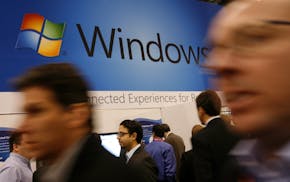QI'm planning to buy a Windows 7 PC and transfer everything to it from my old Windows XP computer. I read that you recommend the Malwarebytes security program. Will it interfere with my existing Norton security software on the new PC?
NANCY DAVIS, ATASCADERO, CALIF.
AThe free version of the Malwarebytes program won't interfere with Norton's antivirus or firewall software. But the enhanced, $25 version of Malwarebytes probably will.
Why? The Norton security programs run constantly, and any other anti-malware program that runs all the time is likely to interfere with Norton.
The free version of Malwarebytes runs only when you start it. After it completes a single scan of your PC, it turns off until the next time you use it. But the for-pay version of Malwarebytes runs continuously.
You can find the free version of Malwarebytes at tinyurl.com/d5jtuz (click "download now.")
By the way, you can't transfer software from your old PC to your new one. Instead, you have to reinstall it on the new computer.
You can reinstall your Norton software by going to tinyurl.com/89fu5fz and following the directions. You can reinstall the free version of Malwarebytes by repeating the steps above.
QScott Garoutte of Edina, Lana Luhm of Eau Claire, Wis., and Randall Sollenberger of Winter Haven, Fla., all asked why a red letter "X" sometimes appears in place of a photograph that was contained in the body of an e-mail.
AThe e-mail "red X" problem has been around for years, and has several possible causes, including software settings (in Microsoft's Outlook e-mail or its Internet Explorer Web browser); the quirks of different e-mail systems (particularly AOL's), and interference from security software.
To fix software settings, see tinyurl.com/6r6jcvl or tinyurl.com/7gnad6f. To avoid the other barriers, send photos as attachments rather than inside the body of the e-mail. Attachments are more uniformly handled by different e-mail systems, and are less likely to trigger your security software.
Note: Several readers have complained that the tinyurls in the column don't work. They do work, but only if they're typed into the Web address box at the top of a browser. You can't search for them on Google or Bing.
Why? Tinyurls aren't websites; they're nicknames for website addresses that are too long to print. The tinyurl.com site converts these nicknames to their real Web addresses.
E-mail tech questions to steve.j.alexander@gmail.com or write to Tech Q&A, 425 Portland Av. S., Minneapolis, MN 55488. Include name, city and telephone number.

Alexander: A beeping computer is telling you what's gone wrong inside

Alexander: How to stop deleted iPhone e-mails from coming back

Alexander: Refurbished PCs may need a BIOS update to use new components

Alexander: Windows 11 not always to blame for browser or e-mail problems

